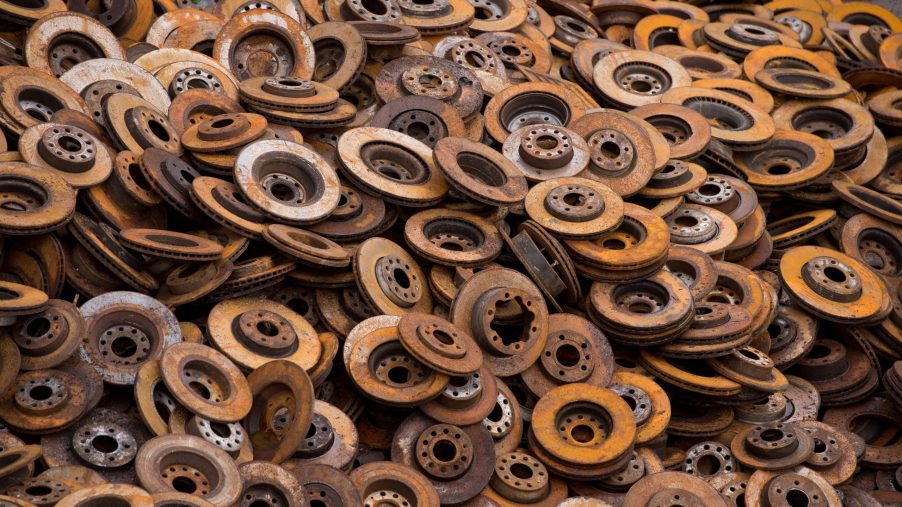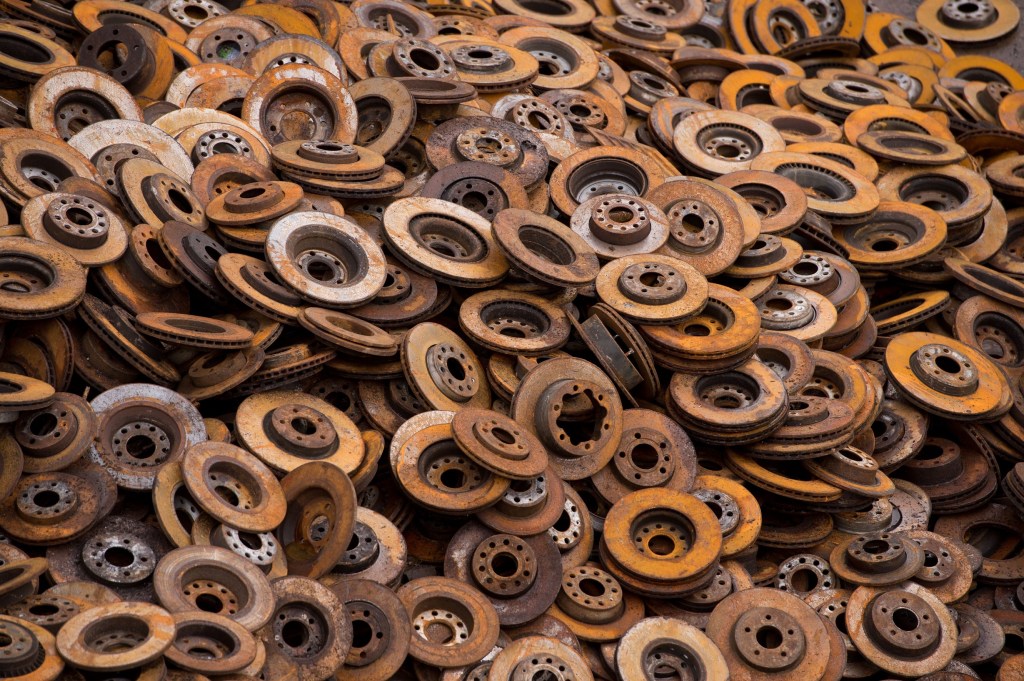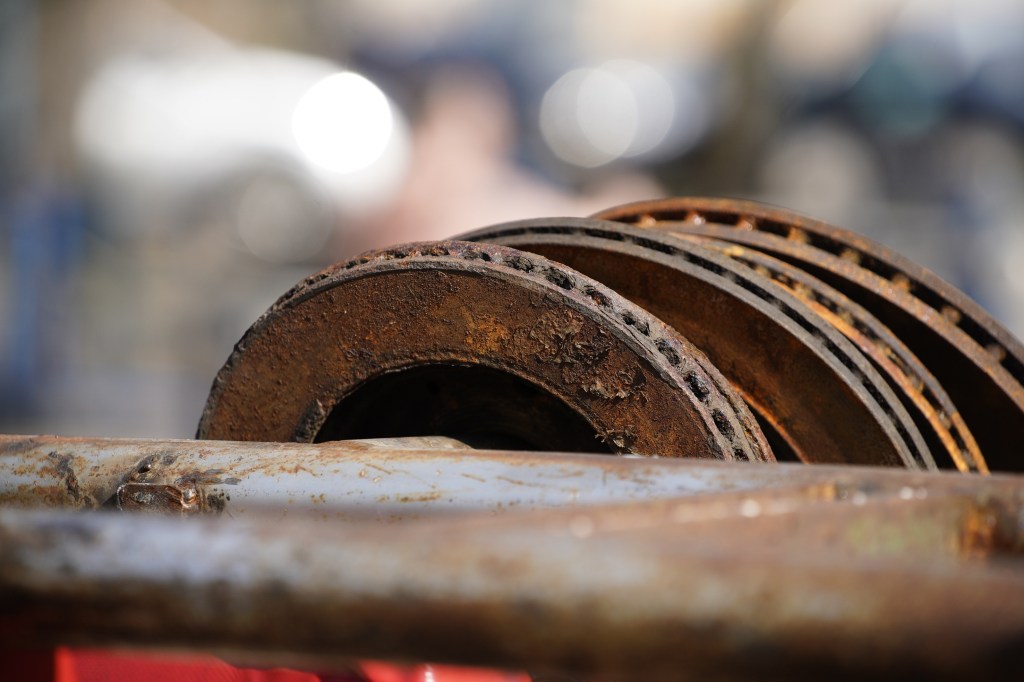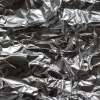
Brake Rotor Rust: How Worried Should You Be?
Brake rotor rust article highlights:
- Unless they’re carbon-ceramic or have a durable coating, brake rotors will develop rust from ambient moisture
- While a small amount of surface rust isn’t a big deal, over time it can damage the brake rotor and other components
- You can remove surface brake rotor rust by using the brakes while you drive or by applying brake cleaner
Next to the drivetrain, your car’s brakes are arguably its most vital maintenance items. That’s why brake squeal isn’t just an annoying noise—it’s a sign that your brakes need attention. However, you don’t need to drive an inch to notice some brake problems. And next to leaking fluid, brake rotor rust is one of the most obvious issues. But are rusty rotors something to worry over? And if they are, what can you do about it?
Why do car brake rotors rust so quickly?

If you live somewhere with salty winter roads, rust is a familiar worry, and not just where brake rotors are concerned. But you don’t need salty slush or even rain to see corrosion creep across your rotors. Just park the car for a few days, or give it a good wash, and you’ll likely see a bit of rust soon. Basically, brake rotor rust is a normal and inevitable part of car life.
This inevitability is because most disc brake rotors are made of cast iron or carbon steel. That makes them durable and inexpensive, but also heavy. And, more importantly, iron plus ambient moisture equals rust.
In addition, many brake pads are either metallic or semi-metallic and often have steel or iron backing plates. So, they rust, too. And if the dust they often produce isn’t disturbed, it leaves a connection between pad and rotor. Thus, the rust spreads. You can see this not just in cars parked for long periods of time, but in electric cars that rely too much on regenerative braking. The physical brakes don’t get exercised, so they rust, rotors and all.
Can you prevent it?
Now, OEMs know that cast-iron and steel brake rotors rust quickly. Hence why many rotors come from the factory with anti-corrosion coatings. However, the friction between the brake pads and rotor faces quickly wear those coatings away into dust. And once that happens, iron and water are free to mingle.
But therein lie a few potential solutions. For one, you can’t have rust without an iron alloy. So, if you install carbon-ceramic brake pads and rotors, rust becomes a non-issue. Or, alternatively, you could sheath the iron/steel surface behind a stronger, non-corroding barrier. That’s what Porsche did with its Surface Coated Brakes: they’re iron rotors coated with a layer of tungsten carbide. And not only does this prevent rust, but it also makes the rotors quieter, last longer, and produce less dust.
Secondly, you could put the brake rotors in an arid environment. In theory, where there’s no moisture, there’s no rust. However, you can still get condensation from big temperature changes. And since brakes heat up from friction, this means rust can happen even in low-moisture climates. It likely won’t come on as quickly, but it’s not as foolproof as taking the iron out of the equation.
On that note, you might have seen people advertising painting brake rotors and calipers as a rust prevention tactic. It’s legit, though only if you use high-temperature paint, Haynes says. But you cannot paint the rotor face or anywhere that the brake pads contact. If you do, the pads won’t grip properly, and the rotor won’t disperse heat effectively. Paint can shield parts of your rotor from rust, but if you’ve got an uncoated iron-based rotor, some face rust will happen.
What happens if you don’t remove brake rotor rust?

Fortunately, as I’ll cover shortly, removing brake rotor rust, especially a minimal surface amount, isn’t difficult. And while it doesn’t look pretty, the only real issue with a bit of surface rust is some brief brake squeal.
However, as noted earlier, rust can spread if left unchecked. That potentially means rusty pads and seized-up calipers. In addition, corrosion is a chemical reaction: it turns iron into iron oxide. It literally eats away at your rotor’s face, leaving pockmarks, depressions, and scars that make braking less effective. Resurfacing the rotor can remove the flaws, but if your rotor’s too thin, you can’t resurface it.
The good news is if your rotors are that rusty, you likely have other problems, such as rusted-out brake lines. And you can stop the rust from causing such damage with a few simple steps.
How can you remove brake rotor rust?
The easiest, simplest way to remove brake rotor rust is to use your brakes. No, seriously, just drive your car and apply the brakes a few times. The friction will wear away the surface rust and leave the rotors shiny again. But don’t slam on the brakes, please. And to prevent the rust from returning after washing your car, gently blow-dry the rotors.
If some enthusiastic braking doesn’t remove the rust, break out (pun not intended, I swear) the brake cleaner. These sprays are specially formulated to safely remove brake dust, oils, grease, and rust, though some elbow grease might be necessary. If you can get it, a chlorinated non-flammable cleaner works best, though you cannot use it on hot parts, The Drive warns. However, they’re not legal in every state, and should only be used in a well-ventilated environment.
Still, don’t be afraid of a little brake rotor rust. Unless you have other, more pressing brake problems, it’s usually just a cosmetic annoyance. And it’s one you can easily take care of.
Follow more updates from MotorBiscuit on our Facebook page.


